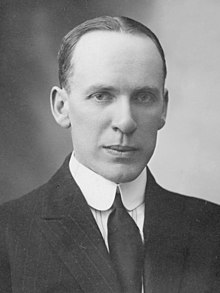
Back Birger Nerman Afrikaans بيرجير نيرمان ARZ Birger Nerman Danish Birger Nerman German Birger Nerman Estonian Birger Nerman French Birger Nerman Italian Birgers Nermans Latvian/Lettish Birger Nerman NB Birger Nerman Portuguese
Birger Nerman | |
|---|---|
 Nerman in the 1920s | |
| Born | 6 October 1888 Norrköping, Sweden |
| Died | 22 August 1971 (aged 82) Stockholm, Sweden |
| Spouse | Zelma Nerman (m. 1932) |
| Academic background | |
| Alma mater |
|
| Academic work | |
| Discipline |
|
| Institutions |
|
| Main interests | Sweden and the eastern Baltic in the Iron Age |
Birger Nerman (6 October 1888 – 22 August 1971) was a Swedish archaeologist, historian and philologist who specialized in the history and culture of Iron Age Sweden.
Nerman was educated at Uppsala University, where he began his career as a lecturer in Nordic philology. He participated in archaeological excavations on Stone Age and Iron Age Sweden, and became noted for his efforts to combine archaeological and philological evidence. Areas investigated by Nerman include Gamla Uppsala and Gotland.
From 1923 to 1925, Nerman was professor of archaeology at the University of Dorpat, during which he made contributions to the development of archaeology in Estonia. In subsequent years, he conducted excavations at Grobiņa and other places, with the aim of investigating relations between Sweden and the eastern Baltic in the Iron Age.
Nerman was director of the Swedish History Museum from 1938 to 1954, during which he organized several exhibitions on Swedish history. He was a Swedish nationalist who opposed both Nazism and Communism, and a noted advocate for the independence of the Baltic states. Nerman was the author of several scholarly works on Iron Age archaeology, and popular works on the culture and history of early Sweden.